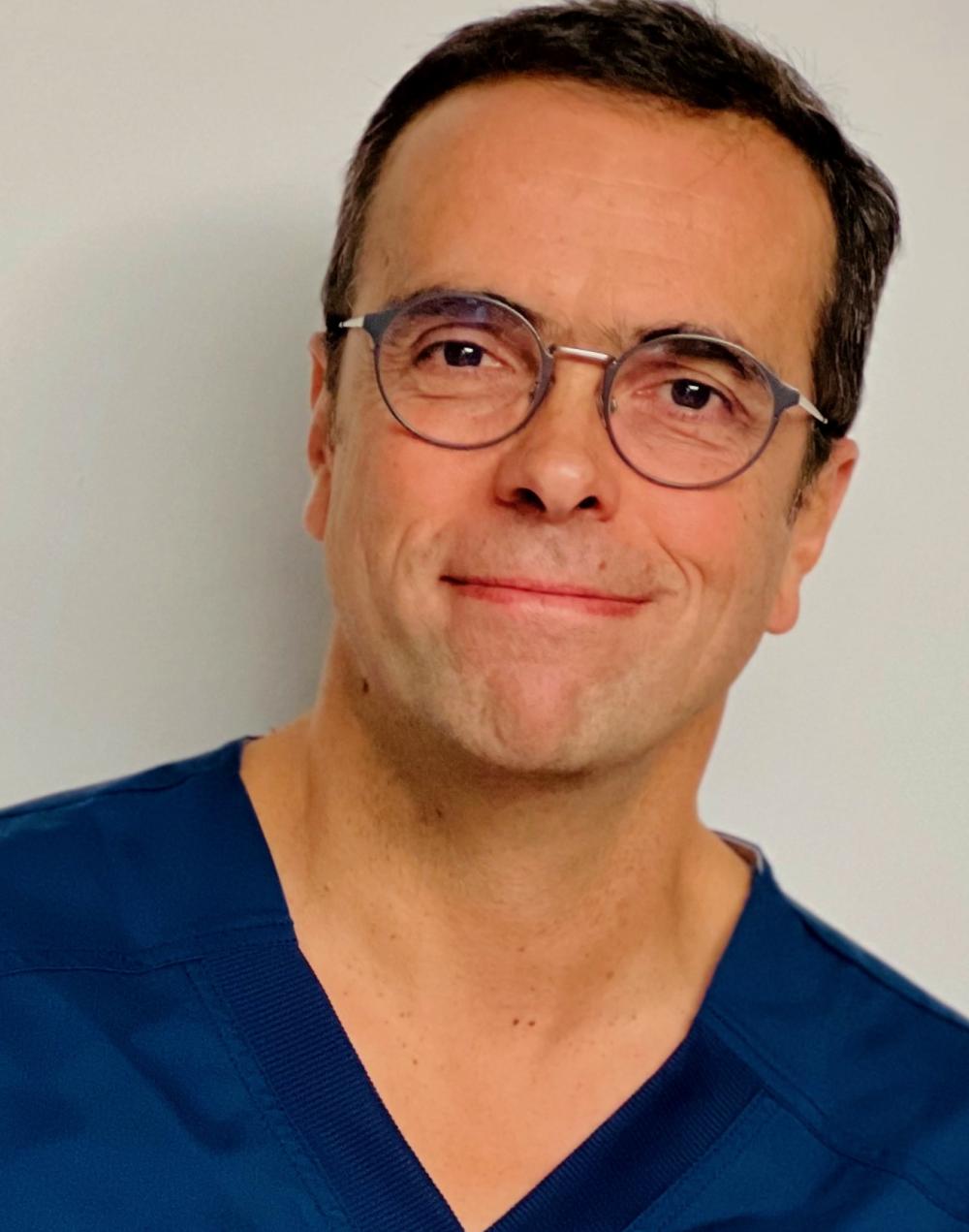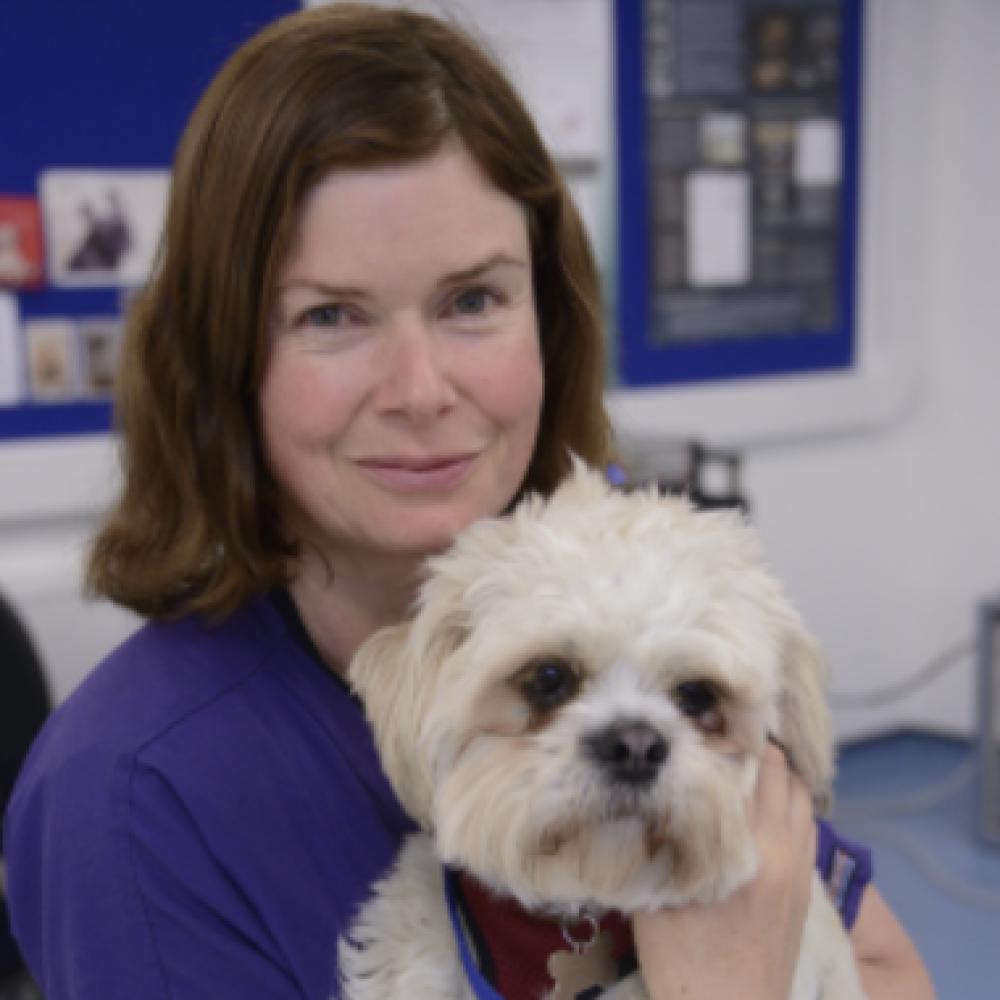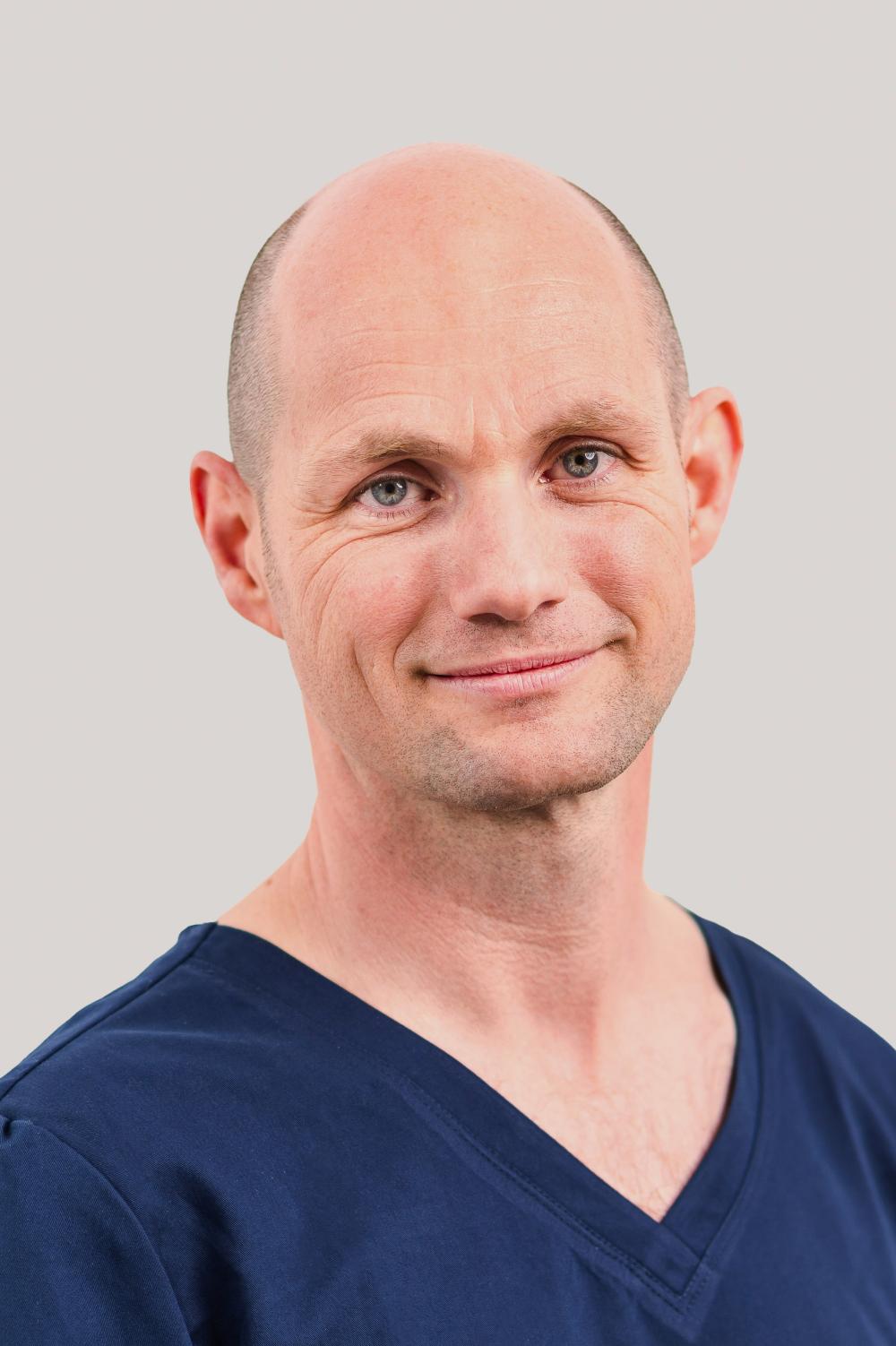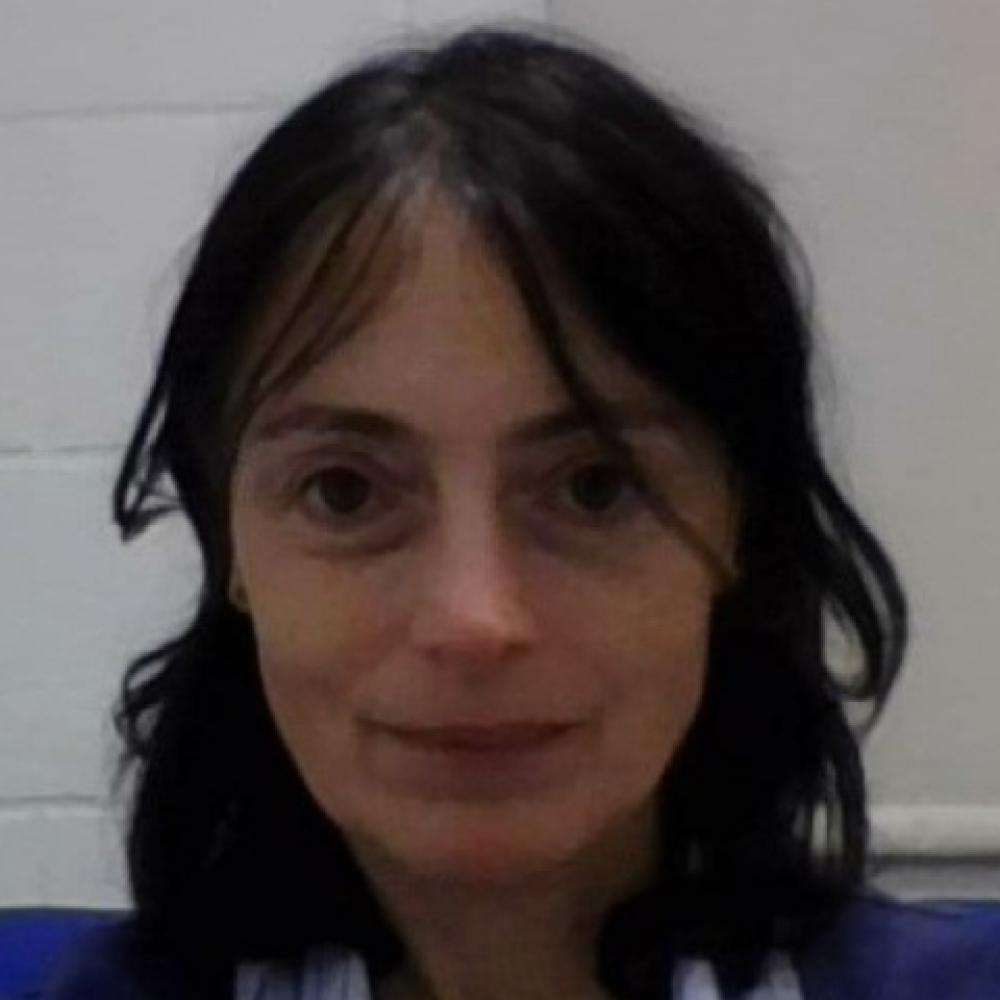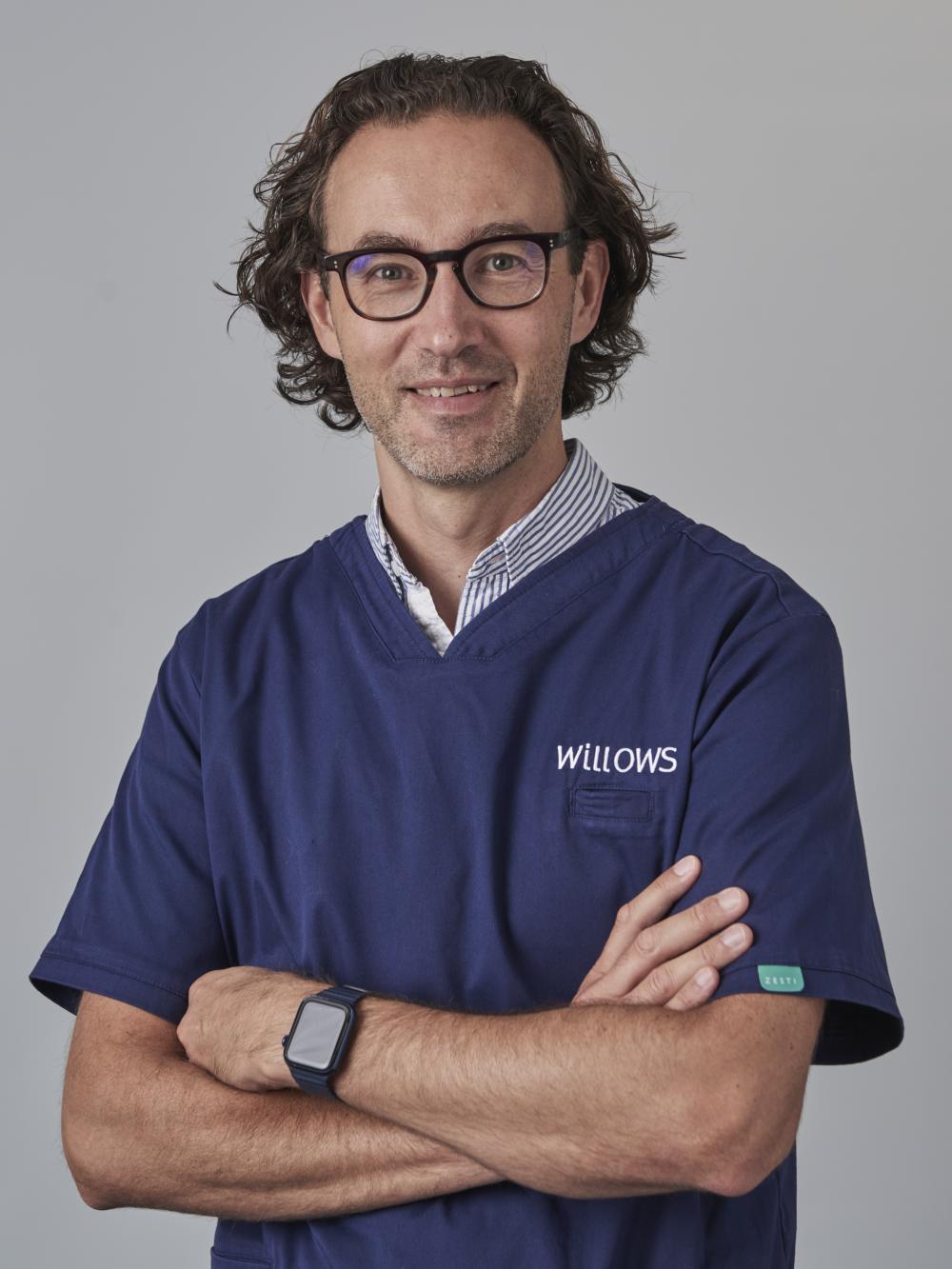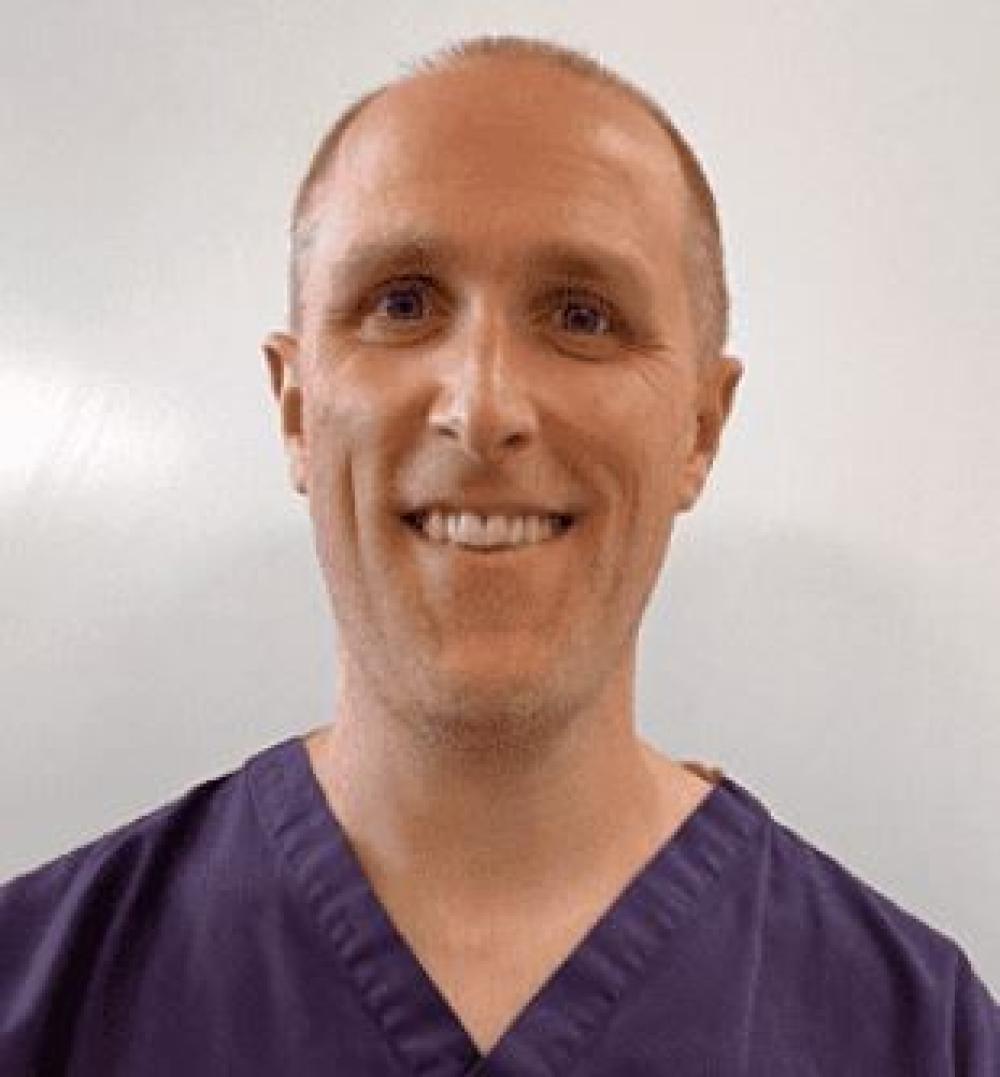Learn at your own pace, wherever you are, with our Small Animal Surgery online and practical learning programme
Developed by a global team of surgical experts, this two-year Small Animal Surgery Postgraduate Certificate (PgC) programme covers all aspects of surgery, including soft tissue, orthopaedic, and spinal surgery. Achieve a high return on investment by enhancing your surgical skills and increasing your practice's efficiency and revenue.
Why Choose Our Small Animal Surgery Programme?
-
Master Surgical Techniques: Gain expertise in crucial clinical procedures such as soft tissue, orthopaedic, and spinal surgery. Reduce the need for external referrals, boost practice income, and enhance job satisfaction.
-
Hands-On Training: Refine your surgical skills in state-of-the-art wet lab facilities. Train with cutting-edge equipment in small group settings to gain confidence and improve your practical skills.
-
Flexible Online Learning: Access our comprehensive online platform, complete with module notes, case studies, high-quality videos, and additional resources.
This programme is provided online with practical sessions held at either our Sheffield, Swindon venue or at Duggan Veterinary Services training facilities in Ireland. To register your interest in undertaking the course in Ireland please click here.
Invest in your professional growth with Improve Veterinary Education and see immediate benefits as you expand your surgical knowledge and expertise. Ready to take the next step in your veterinary career? Learn more today and start transforming your future!
Elevate your skills and achieve a Postgraduate Certificate
Hear what our delegates have to say
Don’t just take our word for it - our delegate feedback speaks for itself.
Key features of this programme
24 varied modules
Covering soft tissue and orthopaedic procedures delivered over 24 months
Support and guidance from a Module Tutor who is a recognised specialist in small animal surgery
The specialist in the subject area will provide online support during each module and will be available to answer all your questions
Multiple learning processes
Presentations, written notes, interactive quizzes and exercises which test your knowledge as you work
High-quality surgical videos
The modules will be supported by surgical videos delivered by a world-class surgeon
Discussion forum
A discussion forum for conversation, debate and sharing cases with your peers and Module Tutors
Four sessions per month
Each module consists of four sessions spread over one month. Sessions comprise separate lessons and case-based studies to work through at your own pace
Online and practical learning programme
Giving you access 24/7 wherever you are using your desktop, laptop or tablet. Supported by 10 practical attendance sessions delivered in state-of-the-art wet-lab facilities
Regular assessments
Pre-module and post-module assessments encourage you to reflect on your learning and evaluate your progress
Dedicated Programme Coordinator
A dedicated Programme Coordinator who will support you every step of the way
Interactive and engaging modules
Which allow you to absorb the learning materials in an online environment
24 varied modules
Covering soft tissue and orthopaedic procedures delivered over 24 months
Support and guidance from a Module Tutor who is a recognised specialist in small animal surgery
The specialist in the subject area will provide online support during each module and will be available to answer all your questions
Multiple learning processes
Presentations, written notes, interactive quizzes and exercises which test your knowledge as you work
High-quality surgical videos
The modules will be supported by surgical videos delivered by a world-class surgeon
Discussion forum
A discussion forum for conversation, debate and sharing cases with your peers and Module Tutors
Four sessions per month
Each module consists of four sessions spread over one month. Sessions comprise separate lessons and case-based studies to work through at your own pace
Online and practical learning programme
Giving you access 24/7 wherever you are using your desktop, laptop or tablet. Supported by 10 practical attendance sessions delivered in state-of-the-art wet-lab facilities
Regular assessments
Pre-module and post-module assessments encourage you to reflect on your learning and evaluate your progress
Dedicated Programme Coordinator
A dedicated Programme Coordinator who will support you every step of the way
Interactive and engaging modules
Which allow you to absorb the learning materials in an online environment
Programme details
Module Summary
01 - Surgical Basics: Asepsis, Instrumentation, Operative techniques and Wound healing
Key Learning Objectives
- Asepsis, sterilization and appropriate antibiosis for surgical cases
- Surgical instrumentation and proper handling
- Different uses of sutures, needles, staples and clips
- Wound healing principles and how to apply them to clinical cases
- Principles of wound management and latest innovations
02 - Urinary and Reproductive tract surgery
Key Learning Objectives
- Renal surgery principles and techniques
- Obstructive diseases of the urinary tract
- Management of urolithiasis
- Surgical options for urinary incontinence: colposuspension, TVT and urethral occluders
- Surgery of the male reproductive system – from prostatic omentalization to penile and preputial procedures
- Surgery of the female reproductive system – ovariectomy and ovariohysterectomy
03 - Upper Gastrointestinal Surgery
Key Learning Objectives
- Surgical approaches to salivary gland disease
- Esophageal disease - indications for surgical treatment
- Gastrotomy and gastrectomy - indications beyond GDV
- Small intestinal disease and how to minimize complications
- Ruptures and hernias
04 - Lower Gastrointestinal Surgery, Liver, Spleen and Pancreas
Key Learning Objectives
- Large intestinal surgery - differences between cats and dogs
- Surgical approaches to the rectum and anus
- Different options for liver surgery – suture, staples or electrosurgery
- Biliary tract surgery – anatomy and surgical options
- Pancreatic surgery
- Splenectomy - indications, techniques and alternatives to surgical removal
05 - Oral, Pharyngeal and Aural surgery
Key Learning Objectives
- Surgery of the lips, cheeks and tongue
- Surgical treatment of palatal abnormalities
- Maxillectomy and mandibulectomy
- Pharyngeal surgery and options for tonsillar surgery
- Aural surgery: lateral wall resection, vertical canal ablation, ventral bulla osteotomy, total canal ablation, lateral bulla osteotomy and approach to aural hematoma
06 - Surgery of the Upper Airways, Larynx and Trachea
Key Learning Objectives
- Conditions of the nasal planum according the animal´s age
- Indications for nasal sinuses surgery
- Brachycephalic airway syndrome
- Surgery of the larynx: paralysis, collapse, trauma, stenosis and neoplasia
- Surgery of the trachea: tracheotomy, tracheostomy, tracheal avulsion, collapse, resection/anastomosis, trauma, foreign bodies and neoplasia
07 - Surgery of the Abdominal and Thoracic Cavities
Key Learning Objectives
- Peritonitis: pathophysiology, clinical signs, diagnosis and treatment options
- Thoracic surgery
- Differences between small and large dogs
- Thoracostomy for pneumothorax, pyothorax and chylothorax
- Thoracotomia
- Lung lobectomy
- Pericardectomy
- PDA
- PRAA - regurgitating patients and thoracotomy
- Chylotorax
- Chest wall diseases
08 - Surgical Oncology
Key Learning Objectives
- Principles of oncologic surgery: approaches to the most common tumors seen in practice
- Latest treatment options for mast cell tumors
- Oral tumors - performing maxillectomy and mandibulectomy
- Gastrointestinal tumors
- Feline-specific tumors
09 - Reconstructive Surgery - Practical Session
Key Learning Objectives
- Tension relieving techniques
- Undermining
- Tension relieving sutures
- Walking sutures
- Bolster / stent sutures
- Continuous pretensioning sutures
- Relaxing incisions
- Multiple punctate relaxing incision
- Simple relaxing incision
- Z-plasty
- V-Y plasty
- Wound closure
- Rectangle / square shape wound
- Circular/crescent shape wound
-
- Triangle shape wound
- Dog ears
- Subdermal plexus flaps
- Advancement flaps
-
- Rotation flap
- Transposition flap
- Interpolation flap
- Axial pattern flaps
- Thoracodorsal flap
- Caudal superficial epigastric flap
- Skin graft
- Full-thickness meshed skin graft
- Pinch and punch graft
10 - Head and Neck Surgery – Practical Session
Key Learning Objectives
- Total ear canal ablation and lateral bulla osteotomy
- Ventral bulla osteotomy
- Lateral approach to the larynx and demonstration of unilateral arytenoid lateralization
- Thyroidectomy (modified extracapsular)
- Mandibular and sublingual sialadenectomy
11 - Thoracic Surgery – Practical Session
Key Learning Objectives
- Thoracotomy
- Lateral intercostal thoracotomy
- Median sternotomy
- Lung lobectomy
- Total lung lobectomy
- Pericardectomy
- Partial pericardectomy
- Thoracocentesis / Thoracic drain placement
- Abdominal drain placement
12 - Gastrointestinal Surgery – Practical Session
Key Learning Objectives
- Esophageal surgery
- Esophageal tube placement
- Approach to the cervical esophagus
- Esophagotomy/ Esophagectomy
- Gastric surgery
- Gastrostomy tube placement
- Gastrotomy/ Gastrectomy
- Gastropexy (incisional)
- Intestinal surgery
- Enterotomy / Enterectomy
- Intestinal biopsies
13 - Urological Surgery - Practical Session
Key Learning Objectives
- Nephrectomy / Nephrotomy
- Renal biopsies
- Cystotomy/ Nystectomy
- Urethrostomy (parascrotal in the dog and perineal in the cat)
- Cystostomy tube placement
- Urohydropulsion
14 - Joint Diseases of the Forelimb
Key Learning Objectives
- Shoulder conditions including luxation, osteochondrosis, dysplasia and excision arthroplasty surgery
- Elbow conditions including, luxations, IOHC, dysplasia, developmental disease and ununited anconeal process
- Developmental carpal disease, carpal hyperextension, arthrodesis and luxations of the carpus and foot
- Growth plate disorders
15 - Joint Diseases of the Hindlimb
Key Learning Objectives
- Pros and cons of surgical options for the ruptured cruciate ligament
- Alternative causes of stifle dysfunction besides the cranial cruciate ligament
- Relate the underlying causes of patellar luxation with the appropriate surgical approach
- Hock anatomy - conditions that affect the joint including osteochondrosis and luxation
- Possible treatments for conditions that affect the hip including dysplasia and luxation
- Pros and cons of total hip replacement
16 - Fracture Repair I
Key Learning Objectives
- Initial assessment of the fractured patient
- Fracture classification
- Principles of fracture repair and practical applications
- Fracture fixation methods and implants including plating and external fixation devices
17 - Fracture Repair II
Key Learning Objectives
- Principles of fracture reduction, including both closed and open techniques
- Bone grafting - cancellous and cortical
- Fore and hindlimb specific fracture stabilization
- Clinical approaches to the following complications: Delayed union/Non-union/Mal-union/Osteomyelitis
18 - Spinal Surgery I
Key Learning Objectives
- Systematic neurological exam and interpretation: localizing spinal lesions
- Application of neurodiagnostics
- Approach and management of paraplegia and tetraplegia
- Clinical approach to neurological emergencies, including cranial trauma and status epilepticus
19 - Spinal Surgery II
Key Learning Objectives
- Surgical options for spinal surgery according to site
- Cervical spine - ventral slot procedure
- Thoracolumbar spine - hemilaminectomy
- Lumbosacral spine - dorsal laminectomy
- CSF tap and myelography - landmarks for acquiring CSF samples and obtaining diagnostic myelograms
20 - Joint Diseases of the Forelimb - Practical Session
- Shoulder joint
- Caudolateral and craniomedial approach to the shoulder joint
- Biceps tenotomy
- Elbow joint
- Medial and lateral approach to the elbow joint
- Subtotal coronoidectomy
- Lag screw fixation of UAP
- Proximal / distal ulna osteotomy
21 - Joint Diseases of the Hindlimb - Practical Session
Key Learning Objectives
- Hip joint
- Craniodorsal approach to the hip
- FHNO
- Stifle joint
- Lateral approach to the stifle
- Lateral fabello-tibial suture
- Recession trochleoplasties
- Tibial tuberosity transposition
22 - Internal Fixation I - Practical Session
Key Learning Objectives
- Application of cerclages and tension band fixations
- Application of positional and lag screws
- Tibial fractures
- Medial approach to the tibia
- Application of a bone plate
- Radial fractures
- Cranio-medial / lateral approach to the radius
- Application of a bone plate
- Femoral fractures
- Lateral approach to the femur
- Application of a bone plate and an intramedullary pin (plate and rod)
23 - Internal Fixation II - Practical Session
Key Learning Objectives
- Recognize the most important features to correctly approach humeral fractures
- Approach the humeral shaft laterally
- Apply a bone plate and an intramedullary pin (plate and rod)
- Perform a dorsal approach to the carpal joint
- Perform a carpal arthrodesis
- Perform a medial and lateral approach to the tarsal joint
- Perform a tarsal arthrodesis
24 - External Fixation and Bone Grafting - Practical Session
Key Learning Objectives
- Cancellous bone grafting
- Harvest cancellous bone from the proximal humerus
- Review external fixation equipment
- Pins, bars and clamps
- Tibial Fracture
- Surgical repair with a type II linear frame
- Comminuted Radial Fracture
- Surgical repair with a type Ib linear frame
Programme details
Module Summary
01 - Surgical Basics: Asepsis, Instrumentation, Operative techniques and Wound healing
Key Learning Objectives
- Asepsis, sterilization and appropriate antibiosis for surgical cases
- Surgical instrumentation and proper handling
- Different uses of sutures, needles, staples and clips
- Wound healing principles and how to apply them to clinical cases
- Principles of wound management and latest innovations
02 - Urinary and Reproductive tract surgery
Key Learning Objectives
- Renal surgery principles and techniques
- Obstructive diseases of the urinary tract
- Management of urolithiasis
- Surgical options for urinary incontinence: colposuspension, TVT and urethral occluders
- Surgery of the male reproductive system – from prostatic omentalization to penile and preputial procedures
- Surgery of the female reproductive system – ovariectomy and ovariohysterectomy
03 - Upper Gastrointestinal Surgery
Key Learning Objectives
- Surgical approaches to salivary gland disease
- Esophageal disease - indications for surgical treatment
- Gastrotomy and gastrectomy - indications beyond GDV
- Small intestinal disease and how to minimize complications
- Ruptures and hernias
04 - Lower Gastrointestinal Surgery, Liver, Spleen and Pancreas
Key Learning Objectives
- Large intestinal surgery - differences between cats and dogs
- Surgical approaches to the rectum and anus
- Different options for liver surgery – suture, staples or electrosurgery
- Biliary tract surgery – anatomy and surgical options
- Pancreatic surgery
- Splenectomy - indications, techniques and alternatives to surgical removal
05 - Oral, Pharyngeal and Aural surgery
Key Learning Objectives
- Surgery of the lips, cheeks and tongue
- Surgical treatment of palatal abnormalities
- Maxillectomy and mandibulectomy
- Pharyngeal surgery and options for tonsillar surgery
- Aural surgery: lateral wall resection, vertical canal ablation, ventral bulla osteotomy, total canal ablation, lateral bulla osteotomy and approach to aural hematoma
06 - Surgery of the Upper Airways, Larynx and Trachea
Key Learning Objectives
- Conditions of the nasal planum according the animal´s age
- Indications for nasal sinuses surgery
- Brachycephalic airway syndrome
- Surgery of the larynx: paralysis, collapse, trauma, stenosis and neoplasia
- Surgery of the trachea: tracheotomy, tracheostomy, tracheal avulsion, collapse, resection/anastomosis, trauma, foreign bodies and neoplasia
07 - Surgery of the Abdominal and Thoracic Cavities
Key Learning Objectives
- Peritonitis: pathophysiology, clinical signs, diagnosis and treatment options
- Thoracic surgery
- Differences between small and large dogs
- Thoracostomy for pneumothorax, pyothorax and chylothorax
- Thoracotomia
- Lung lobectomy
- Pericardectomy
- PDA
- PRAA - regurgitating patients and thoracotomy
- Chylotorax
- Chest wall diseases
08 - Surgical Oncology
Key Learning Objectives
- Principles of oncologic surgery: approaches to the most common tumors seen in practice
- Latest treatment options for mast cell tumors
- Oral tumors - performing maxillectomy and mandibulectomy
- Gastrointestinal tumors
- Feline-specific tumors
09 - Reconstructive Surgery - Practical Session
Key learning objectives:
- Tension relieving techniques
- Undermining
- Tension relieving sutures
- Walking sutures
- Bolster/stent sutures
- Continuous pre-tensioning sutures
- Relaxing incisions
- Multiple punctate relaxing incision
- Simple relaxing incision
- Z-plasty
- V-Y plasty
- Wound closure
- Rectangle/square shape wound
- Circular/crescent shape wound
- Triangle shape wound
- Dog ears
- Subdermal plexus flaps
- Advancement flaps
- Rotation flap
- Transposition flap
- Interpolation flap
- Axial pattern flaps
- Thoracodorsal flap
- Caudal superficial epigastric flap
- Skin graft
- Full-thickness meshed skin graft
- Pinch and punch graft
10 - Head and Neck Surgery – Practical Session
Key Learning Objectives
- Total ear canal ablation and lateral bulla osteotomy
- Ventral bulla osteotomy
- Lateral approach to the larynx and demonstration of unilateral arytenoid lateralization
- Thyroidectomy (modified extracapsular)
- Mandibular and sublingual sialadenectomy
11 - Thoracic Surgery – Practical Session
Key Learning Objectives
- Thoracotomy
- Lateral intercostal thoracotomy
- Median sternotomy
- Lung lobectomy
- Total lung lobectomy
- Pericardectomy
- Partial pericardectomy
- Thoracocentesis/thoracic drain placement
- Abdominal drain placement
12 - Gastrointestinal Surgery – Practical Session
Key Learning Objectives
- Esophageal surgery
- Esophageal tube placement
- Approach to the cervical esophagus
- Esophagotomy/esophagectomy
- Gastric surgery
- Gastrostomy tube placement
- Gastrotomy/gastrectomy
- Gastropexy (incisional)
- Intestinal surgery
- Enterotomy/enterectomy
- Intestinal biopsies
13 - Urological Surgery - Practical Session
Key Learning Objectives
- Nephrectomy / Nephrotomy
- Renal biopsies
- Cystotomy/ Nystectomy
- Urethrostomy (parascrotal in the dog and perineal in the cat)
- Cystostomy tube placement
- Urohydropulsion
14 - Joint Diseases of the Forelimb
Key Learning Objectives
- Shoulder conditions including luxation, osteochondrosis, dysplasia and excision arthroplasty surgery
- Elbow conditions including, luxations, IOHC, dysplasia, developmental disease and ununited anconeal process
- Developmental carpal disease, carpal hyperextension, arthrodesis and luxations of the carpus and foot
- Growth plate disorders
15 - Joint Diseases of the Hindlimb
Key Learning Objectives
- Pros and cons of surgical options for the ruptured cruciate ligament
- Alternative causes of stifle dysfunction besides the cranial cruciate ligament
- Relate the underlying causes of patellar luxation with the appropriate surgical approach
- Hock anatomy - conditions that affect the joint including osteochondrosis and luxation
- Possible treatments for conditions that affect the hip including dysplasia and luxation
- Pros and cons of total hip replacement
16 - Fracture Repair I
Key Learning Objectives
- Initial assessment of the fractured patient
- Fracture classification
- Principles of fracture repair and practical applications
- Fracture fixation methods and implants including plating and external fixation devices
17 - Fracture Repair II
Key Learning Objectives
- Principles of fracture reduction, including both closed and open techniques
- Bone grafting - cancellous and cortical
- Fore and hindlimb specific fracture stabilization
- Clinical approaches to the following complications: Delayed union/Non-union/Mal-union/Osteomyelitis
18 - Spinal Surgery I
Key Learning Objectives
- Systematic neurological exam and interpretation: localizing spinal lesions
- Application of neurodiagnostics
- Approach and management of paraplegia and tetraplegia
- Clinical approach to neurological emergencies, including cranial trauma and status epilepticus
19 - Spinal Surgery II
Key Learning Objectives
- Surgical options for spinal surgery according to site
- Cervical spine - ventral slot procedure
- Thoracolumbar spine - hemilaminectomy
- Lumbosacral spine - dorsal laminectomy
- CSF tap and myelography - landmarks for acquiring CSF samples and obtaining diagnostic myelograms
20 - Internal Fixation I - Practical Session
Key Learning Objectives
- Application of cerclages and tension band fixations
- Application of positional and lag screws
- Tibial fractures
- Medial approach to the tibia
- Application of a bone plate
- Radial fractures
- Cranio-medial/lateral approach to the radius
- Application of a bone plate
- Femoral fractures
- Lateral approach to the femur
- Application of a bone plate and an intramedullary pin (plate and rod)
21 - Internal Fixation II - Practical Session
Key Learning Objectives
- Recognize the most important features to correctly approach humeral fractures
- Approach the humeral shaft laterally
- Apply a bone plate and an intramedullary pin (plate and rod)
- Perform a dorsal approach to the carpal joint
- Perform a carpal arthrodesis
- Perform a medial and lateral approach to the tarsal joint
- Perform a tarsal arthrodesis
22 - External Fixation and Bone Grafting - Practical Session
Key Learning Objectives
- Cancellous bone grafting
- Harvest cancellous bone from the proximal humerus
- Review external fixation equipment
- Pins, bars and clamps
- Tibial Fracture
- Surgical repair with a type II linear frame
- Comminuted Radial Fracture
- Surgical repair with a type Ib linear frame
23 - Joint Diseases of the Forelimb - Practical Session
Key Learning Objectives
- Shoulder joint
- Caudolateral and craniomedial approach to the shoulder joint
- Biceps tenotomy
- Elbow joint
- Medial and lateral approach to the elbow joint
- Subtotal coronoidectomy
- Lag screw fixation of UAP
- Proximal/distal ulna osteotomy
24 - Joint Diseases of the Hindlimb - Practical Session
Key Learning Objectives
- Hip joint
- Craniodorsal approach to the hip
- FHNO
- Stifle joint
- Lateral approach to the stifle
- Lateral fabello-tibial suture
- Recession trochleoplasties
- Tibial tuberosity transposition
Qualifications
General Practitioner Certificate (GPCert)
This course is accredited by ISVPS and allows you to achieve a General Practitioner Certificate
Postgraduate Certificate (PgC)

By attending the full structured taught programme and following successful assessment, you can gain the ISVPS General Practitioner Certificate (GPCert) awarded by the International School of Veterinary Postgraduate Studies (ISVPS) and the Postgraduate Certificate (PgC) from Harper Adams University (HAU).
The Postgraduate Certificate (PgC)
The PgC represents Masters Level 7 within the Quality Assurance Agency’s framework for higher and further education. It provides 60 transferable academic credits towards the 180 required for a Master's degree in the UK or 30 ECTS credits (Europe).
On successful attainment, you will also be awarded the ISVPS GPCert(SAS) and a personalised certificate, and your name will be included in the ISVPS register of General Practitioner Certificate holders.
RCVS Advanced Practitioner Status
After completing your Postgraduate Certificate, you can apply for the RCVS Advanced Practitioner Status. This is subject to meeting all of the other entry requirements set out by the RCVS in the Applicant Guidance Notes. You will also need to provide evidence of Key Professional Skills knowledge to the RCVS when applying for the Advanced Practitioner Status.
General Practitioner Advanced Certificate (GPAdvCert) and Masters degree
By continuing your learning journey with us, your PgC may also be used towards an ISVPS GPAdvCert, or a Professional Master's degree from Harper Adams University. These qualifications will enable you to expand your knowledge and further demonstrate your skills while obtaining academic recognition.
Speakers
Pricing
Pricing Billing
Small Animal Surgery
Payment Terms & Conditions
Registration Information
Pricing
Pricing Billing
Small Animal Surgery
Payment Terms & Conditions
Registration Information
100% Satisfaction
We're completely confident in the quality of our training and CPD. So much so that if you're not 100% satisfied with your certificate course, we'll give you a 100% refund. Just get in touch with us within 30 days of your start date and we'll sort the rest. T's and C's apply.
Find out moreFAQs
Practical Sessions
Where are practical CPD courses or face-to-face modules held?
What will the timings be for face-to-face certificate modules and practical CPD sessions? How will my day be structured?
Where do the cadavers come from for the practical CPD and surgical modules/courses?
What should I wear to a practical CPD course/module?
I will be travelling from overseas, do I need a Visa?
Will the dogs used for practical CPD courses be sedated?
Will the dogs used for scanning have any abnormalities?
Are the dogs used for ultrasound CPD clipped?
Are cats used for any of the ultrasound courses?
Postgraduate Certificates (PgCs)
Royal College of Veterinary Surgeons (RCVS) Advanced Practitioner (AP) Status – what has the RCVS announced?
What is a Postgraduate Certificate (PgC)?
Am I eligible for the PgC programme?
How do I enrol on the PgC programme?
I have previously achieved a GPCert. Can I still upgrade to a PgC?
Is the PgC equivalent to the RCVS CertAVP, BSAVA PGCert, and other university-awarded veterinary postgraduate certificates?
How are Improve’s PgCs different from other providers?
Will a PgC enable me to apply for the RCVS Advanced Practitioner Status?
How will I be assessed for the PgC?
What does the PgC fee include?
What’s not included in the PgC fee? Do I need to budget for further costs?
Payments & Finance
What payment methods do you accept?
Do you offer any flexible payment plans?
What payment methods can I use for setting up a direct debit?
Do you issue separate invoices for each instalment?
Why was my Direct Debit payment not charged on the day that is established in my payment plan?
Why couldn’t I make payment during check-out?
Where can I find the bank details for the bank/wire transfer?
What happens if my circumstances change and I need to cancel my order?
When is payment for my veterinary CPD course due?
How much do the veterinary CPD courses and certificate programmes cost?
My course includes assessments with HAU, how do I make payment for these?
My CPD course includes assessments with ISVPS, how do I make payment for these?
Can I pay by Direct Debit?
Online Learning & Platform
Is there a discussion forum or way to interact with other delegates?
What happens if I lose internet connection or need to pause my session?
How do I track my progress in each online module?
Can I access course materials on mobile devices or offline?
What are the technical requirements to access online courses?
If coming from a non-European country – how would face-to-face module attendance work for the PgC?
How do I register for the GPCert and/or the PgC?
Is the PgC programme recognised by other countries?
General Practitioner Certificates (GPCerts)
What is the criteria for enrolling in a General Practitioner Certificate programme?
What is the difference between a GPCert and a PgC?
Can I use this veterinary certificate programme towards my veterinary CPD hours?
How long does a General Practitioner Certificate (GPCert) take to achieve?
I want to register for a veterinary certificate course but I may be away for some of the modules. Does this mean I will miss out?
How long do I have to finish the modules for my GPCert?
What resources will be available to support me through the certificate programme?
How long do I have access to the course material for?
How will I be assessed for the GPCert?
What happens if I am not eligible to sit the assessments and/or exam with my cohort?
What does the General Practitioner Certificate programme fee include?
What’s not included in the certificate programme fee? Do I need to budget for further costs?
Will my veterinary postgraduate qualification be recognised in other countries?
Can I take a postgraduate certificate if coming from a non-European country? How do face-to-face modules work?
What is a Postgraduate Certificate (PgC)?
Where are the taught programmes held?
I have previously achieved a GPCert. Can I use this towards a PgC?
Are Improve’s Postgraduate Certificates academically equivalent to the RCVS CertAVP and other postgraduate certificates?
Over what time period can I take the taught modules?
I want to register on a modular course but I may be away for some of the modules. Does this mean I will miss out?
Will Improve’s PgCs enable me to apply for the RCVS Advanced Practitioner Status?
What resources will be available to support me through the PgC?
How are Improve’s PgC programmes different to other providers?
No ordinary online learning experience
Learn with the leading global provider of online veterinary CPD!
Find out more




